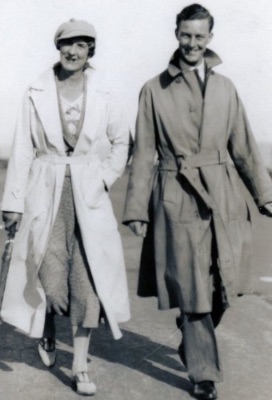
the first one does the talkin’. Or so goes the rule we learned as novice readers. It’s why we pronounce ROAD as if it were RODE, and not RAID and why RAID rhymes with TRADE and not . . . well, you get the picture, I think.
We need the rule because of the frequency with which vowels step out together in our funny old language — and the visual it creates in our minds makes it a particularly useful mnemonic tool.
More than occasionally, wines act like vowels, in the sense that they often stroll into the market in pairs. You will have seen such duos on the FKC shelves. It’s also true that often one will do the talking — but I’Il get to that in a minute. Let’s start by considering what moves them to do the promenading in the first place.
The law that governs the appellation system specifies in remarkable detail exactly how a wine must be put together in order to earn the right to use the community trademark (Rioja or Chianti, say) on a label. So, the fruit must be grown within the specified townships, may only assume the permitted color (some appellations limit production to white wines, others to red), and must achieve minimum levels of ripeness before harvest. There are also required periods for maturation in barrel, or other vessel, and in bottle. It’s also typically the case that vines must be of a certain age before they can contribute to a cuvée bearing the appellation name.
This last point is a key one, since all growers will have some younger and some older vines to work with. Eventually younger vines will come of age, but until they do, what is our vintner to do with the fruit she harvests from them? She could just sell it off, of course, but a more rational approach may be to create a separate cuvée under a less stringent appellation designation and bring it to market at a lower price. This way, the integrity of the estate’s top (or ‘first’) wine is not diluted with fruit from immature vines, appellation law is accounted for, and our winemaker gets to market a ‘second’ wine that makes good use of all her vineyard assets.
This system is widely practiced and it has some distinct advantages for the consumer. For one thing, second wines are more affordable, giving more of us a chance to experience the work of especially talented winemakers. Another bonus: This is often the place where a producer can afford to do some experimenting, some tweaking, at low risk to the reputation. Thirdly, it gives all of us a chance to taste for ourselves what it is that makes one wine — likely grown in the same place, with similar fruit and a common aesthetic — worth more than another. One gets to actually taste the differences more mature vines, a slightly better exposition, or longer aging in barrel and bottle produces. The pedagogical aspect alone is significant and fun to experience.
Now, about the talkin.’ One could say that an estate’s first wine’s sterling reputation is what prompts the consumer to think its second wine worth trying. Or, we might surmise that the second wine is a kind of off-Broadway version of something that we might, at a later time or on a special occasion, be willing to shell out for.
All of which is just another way of saying that, in this situation, who is doing the talking may well depend on who is doing the listening.